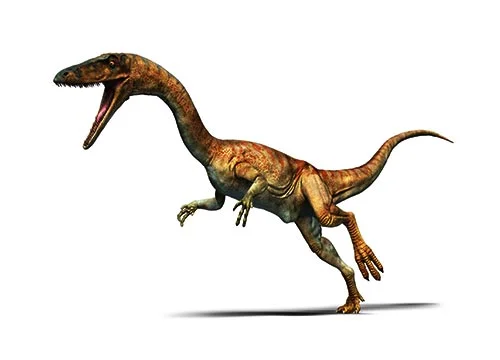Coelophysis (Hollow form)

See-lo-fie-sis
Edward Drinker Cope - 1889
Carnivore
Estimated 6-9 meters long
Small Theropod
C. bauri (type), C. kayentakatae, C. rhodesiensis. Possibly C. holyokensis
South Africa, Zimbabwe USA, New Mexico and Arizona. Quite possibly other areas of the US and even further afield
Late Triassic, 210 million years ago
Coelophysis Facts
Coelophysis is a genus of theropod dinosaur that lived during the Late Triassic period, around 210 million years ago. It was a relatively small dinosaur, estimated to be around 6-9 meters long and weighing around 200-300 kg.
The name Coelophysis is derived from the Greek words “koilos” meaning hollow, and “physis” meaning form, referring to the animal’s hollow bones. This skeletal structure was an adaptation to minimize weight and make the dinosaur more agile and efficient in hunting and foraging.
Coelophysis was a bipedal predator, with long, slender legs and a long, slender tail, ideal for quick and agile movement. The dinosaur’s sharp and curved claws were used to catch and hold prey, and its small but strong jaws were equipped with razor-sharp teeth. It is believed to have been an opportunistic predator, feeding on a variety of prey including smaller dinosaurs, lizards, and early mammals.
Coelophysis is a significant dinosaur in the world of paleontology, and its fossils have been found in several locations in the southwestern United States and in Mexico. The discovery of numerous Coelophysis skeletons in the Late Triassic rocks of New Mexico in the late 1930s was particularly significant, and it is considered one of the most abundant and well-known dinosaurs from this time period.
In conclusion, Coelophysis was a fascinating and important dinosaur of the Late Triassic period, and its fossils continue to provide valuable information about the evolution of dinosaurs and the ancient world.



